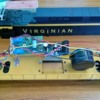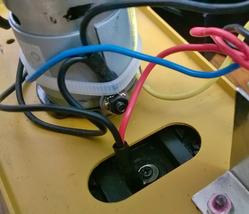Wanting to get my hands dirty on a conversion and wanted to make sure that I didn't let all the smoke out of the new board, I am new to this conversion stuff so was looking for help. The loco at hand is an old Williams EF-4 rectifier BLK/GLD with True BlastII sound. I have an ESU 50200 command center and want to upgrade this loco to an Loksound v4.0 54399 decoder. There are dual motors and my first question is are they isolated? I believe the brushes are isolated but not sure. Second question is do I tie these motors together and solder them to the main motor contact on the loksound decoder or separate and place one on the motor aux tab?? Third question is I see on the ESU schematic that there is a left and right track power, on the loco the red and black wire are tied together and screwed to the center rail pickup, Do I just solder these to the +/- terminals on the decoder which doesn't seem right to me?
Thanks for any help, it is much appreciated. I searched the forums and did not find my answer. If this is already here please point me in the proper direction.
Thanks and God Bless
Merry Christmas









